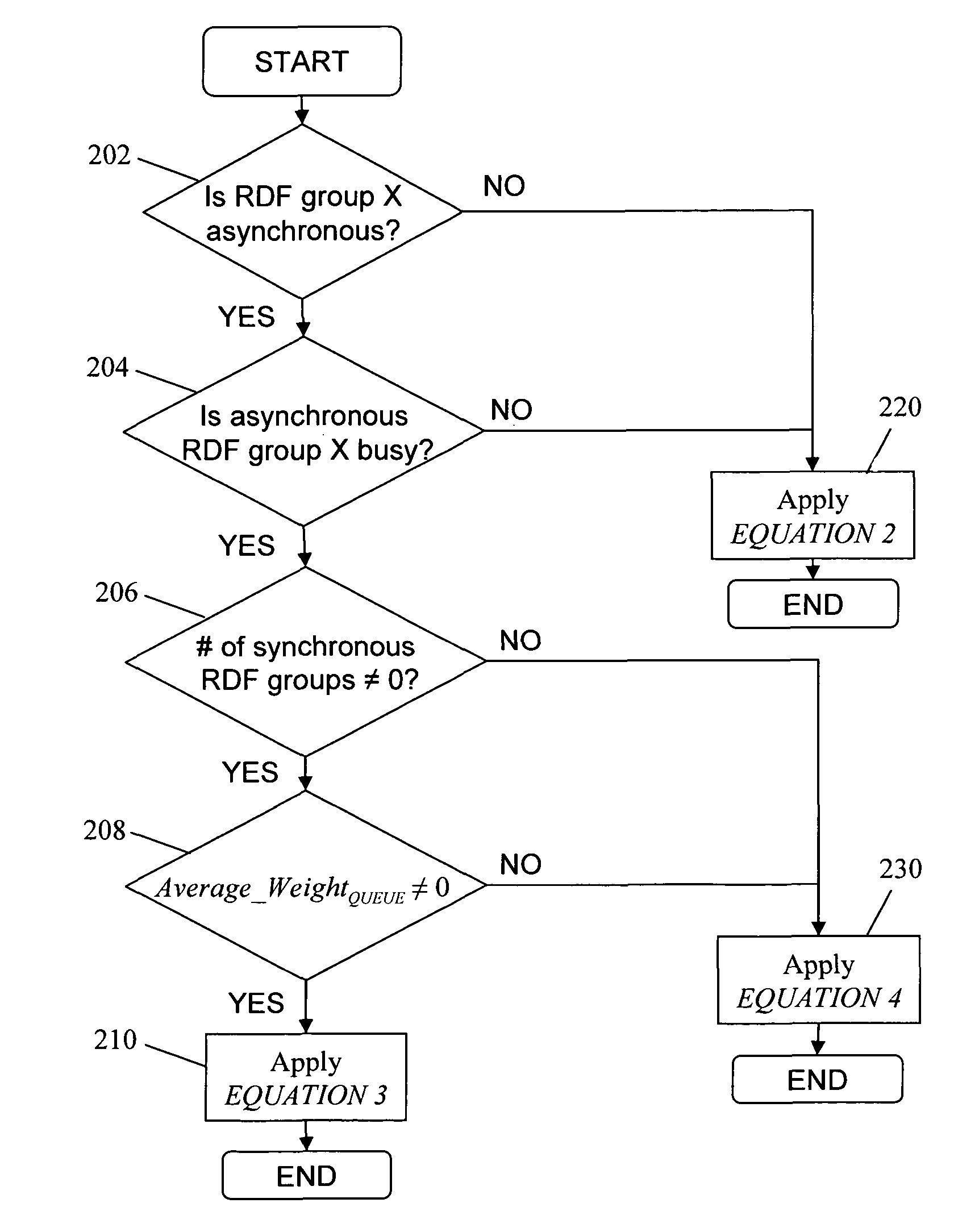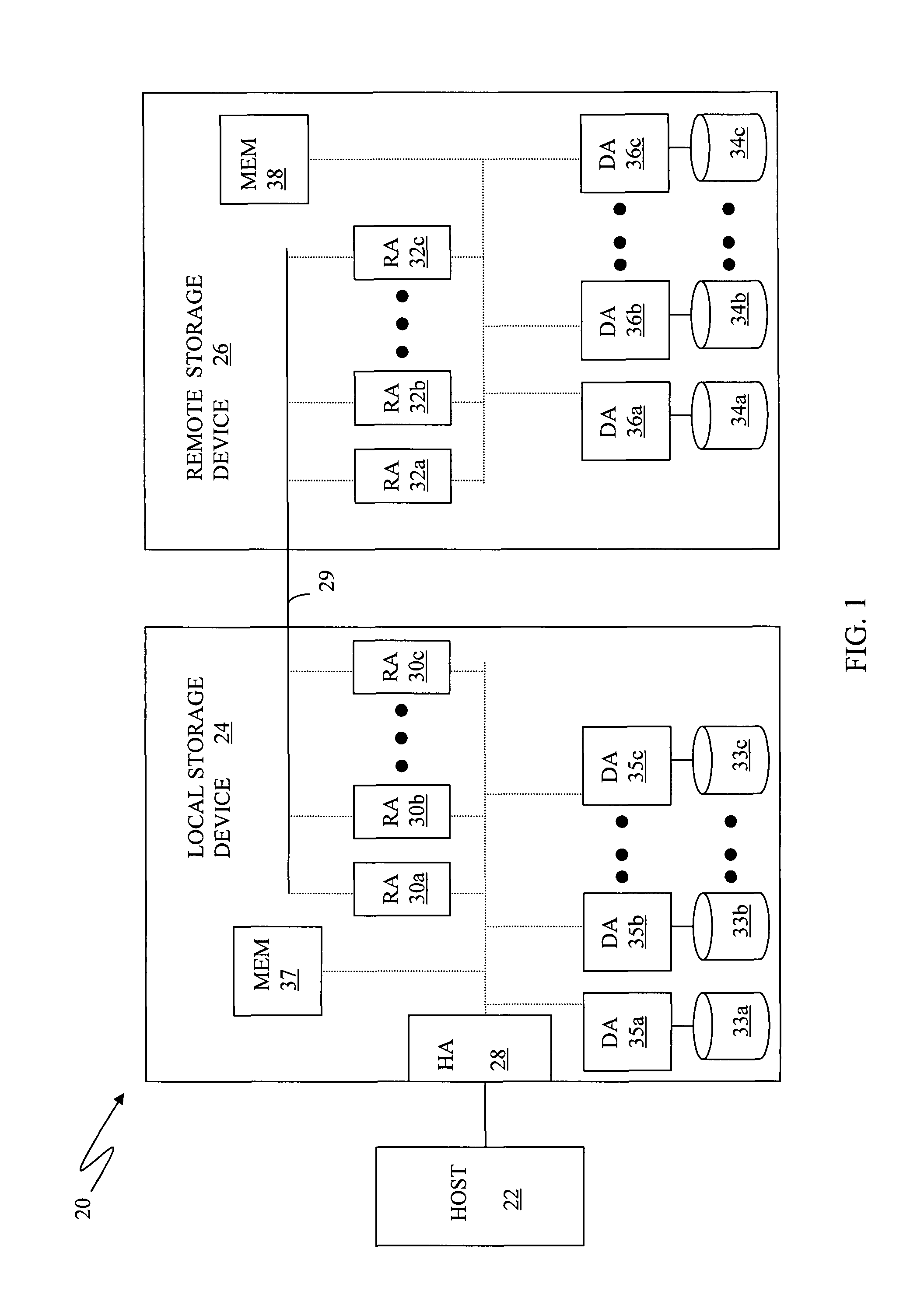Dynamic balancing of writes between multiple storage devices
a storage device and dynamic balancing technology, applied in the direction of multi-programming arrangements, instruments, program control, etc., can solve the problems of synchronous withdrawal, delay in rdf transfer and then waiting for an acknowledgement back after the transfer is complete, and inability to make rdf transfer, etc., to achieve the effect of synchronous withdrawal, delay of one iteration of bottlenecks associated with using rdf in synchronous mod
- Summary
- Abstract
- Description
- Claims
- Application Information
AI Technical Summary
Problems solved by technology
Method used
Image
Examples
Embodiment Construction
[0026]Referring now to the figures of the drawings, the figures comprise a part of this specification and illustrate exemplary embodiments of the described system. It is to be understood that in some instances various aspects of the system may be shown schematically or may be shown exaggerated or altered to facilitate an understanding of the system.
[0027]FIG. 1 illustrates a system 20 that includes a host 22, a local storage device 24 and a remote storage device 26. The host 22 reads and writes data from and to the local storage device 24 via a host adapter (HA) 28, which facilitates the interface between the host 22 and the local storage device 24. Although the diagram 20 only shows one host 22 and one HA 28, it will be appreciated by one of ordinary skill in the art that multiple HA's may be used and that one or more HA's may have one or more hosts coupled thereto.
[0028]Data from the local storage device 24 is copied to the remote storage device 26 via an RDF link 29 to cause the ...
PUM
 Login to View More
Login to View More Abstract
Description
Claims
Application Information
 Login to View More
Login to View More - R&D
- Intellectual Property
- Life Sciences
- Materials
- Tech Scout
- Unparalleled Data Quality
- Higher Quality Content
- 60% Fewer Hallucinations
Browse by: Latest US Patents, China's latest patents, Technical Efficacy Thesaurus, Application Domain, Technology Topic, Popular Technical Reports.
© 2025 PatSnap. All rights reserved.Legal|Privacy policy|Modern Slavery Act Transparency Statement|Sitemap|About US| Contact US: help@patsnap.com



